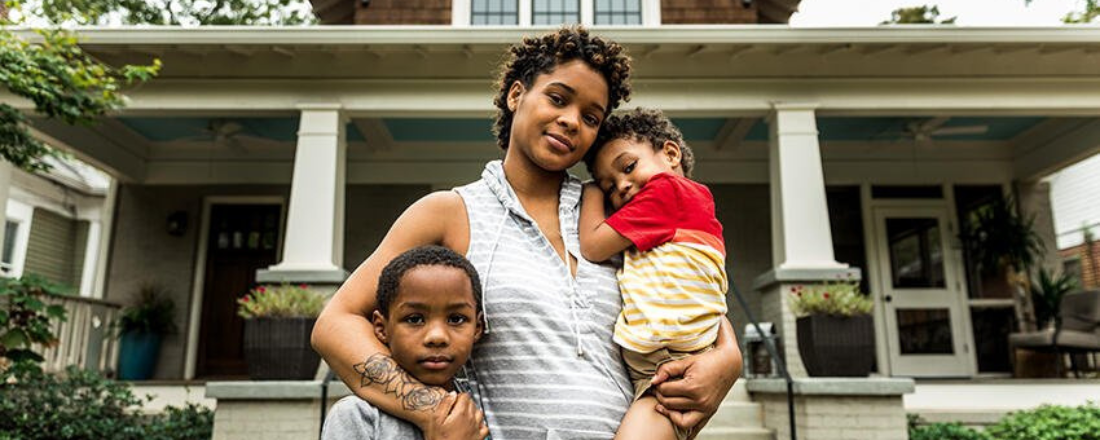
Housing, Equity, and Health in U.S. News, 2020-2021: Findings and Recommendations
-
Focus Areas
Healthy Communities -
Expertise
Media Advocacy & Communications -
Programs
Berkeley Media Studies Group -
Strategic Initiatives
COVID-19

The evidence is clear: Health depends on access to safe, stable housing. Unfortunately, a legacy of inequitable and unjust housing policies limit access to housing for many people, based on factors like race, immigration status, disability status, income-level, gender, and sexuality. These systemic barriers to having a quality, affordable home are key drivers of health inequities in the United States.
To understand the specific nuances of how news coverage frames the complex intersections of housing and health equity, PHI’s Berkeley Media Studies Group analyzed news about housing and health equity from media markets across the country. The report also includes messaging and framing recommendations for housing and health equity advocates, as well as journalists.
Explore The Full Report
Report Findings: Housing, Equity, Health & COVID in the News
During the first year of the COVID-19 pandemic, coverage explicitly connected housing to COVID-19. Most articles discussed the impact of the pandemic on existing disparities or called for changes to address housing instability as a way of preventing the spread of the virus and supporting vulnerable communities in their efforts to recover from the pandemic. Few stories connected housing to any other health outcome besides COVID.
Various characters, or sources, appeared in housing news against the backdrop of the pandemic, including landlords, tenants, unhoused people, and housing advocates. Many of these figures were framed in conflict with one another. The deepest divisions appeared between landlords and tenants, with both sides periodically accusing the other of duplicitous or unscrupulous behavior. This “he said-she said” format often flattens complex policy issues, their histories, and future impacts without the context that would help the public understand the need for equity-focused solutions and would hold policymakers accountable for enacting them.
Unhoused people were regularly quoted in the coverage, but most often only to share graphic details of their lived experience on the streets; rarely were they called upon to share their expertise about the housing crisis, or to advocate for solutions. Beyond engendering pity or fear, such narrow, individually focused stories potentially obscure the broader policy or historical landscape that could help readers understand why so many people are unhoused or set the stage for reporting on equity-focused solutions.
Government officials were also prominent figures in the coverage and were often called upon to address housing issues and rectify inequities: Indeed, most stories were in the news because of a milestone or breakthrough achieved in a policy, initiative, or program. News about housing is unusual in this respect because previous analyses of news about a number of issues have documented that coverage seldom evokes the role of government in solving problems. This pattern in coverage likely stems from the well-documented tension in the United States between the notion that health and well-being are shaped purely by personal choices and the belief that institutions, including government entities, also must act to protect the public’s health.
When racial justice and the relationship to housing and health equity were covered, reporters focused on disparate impacts or troubling data points, rather than describing solutions or quoting sources who could describe their vision for what housing and health could look like in their communities. Black, Indigenous, and other people of color were most often mentioned in statistics documenting inequities.
Framing recommendations
Helping the public and policymakers understand the connection between housing and health is a key step toward not only advancing housing policy and improving community health, but also toward strengthening the movement for racial and health equity. Similarly, understanding how journalists currently frame housing—and how those choices shape long-term narratives—can help housing and health advocates be strategic about their communication strategies.
Recommendations for health equity & housing justice advocates
Bring racial equity into the frame.
- Frame racial equity as part of the solution, not just the problem.
- Uplift Black, Indigenous, and People of Color (BIPOC) as leaders and experts.
Connect housing to health in the context of COVID—and beyond.
- Illustrate that long before COVID, decades of problematic housing policies exacerbated health disparities.
- Demonstrate the connections among equity, housing, and health.
Position the story “characters” to broaden the frame about housing.
- Cultivate messengers across diverse sectors.
- Cultivate messengers across diverse communities.
- Prepare messengers to be clear and effective in high-stakes situations with reporters.
Expand the frame around the role of government.
- Be specific about which government actors and agencies must act—and what they should do.
- Hold government accountable for racial equity in housing solutions, even when it’s difficult.
- Tie housing solutions to your long-term vision for change.
Recommendations for journalists
- Avoid using language that personifies the housing market.
- Expand who is considered an expert source.
- Address the long-term impact of immediate policy actions.
Work With Us
You change the world. We do the rest. Explore fiscal sponsorship at PHI.
Support Us
Together, we can accelerate our response to public health’s most critical issues.
Find Employment
Begin your career at the Public Health Institute.


